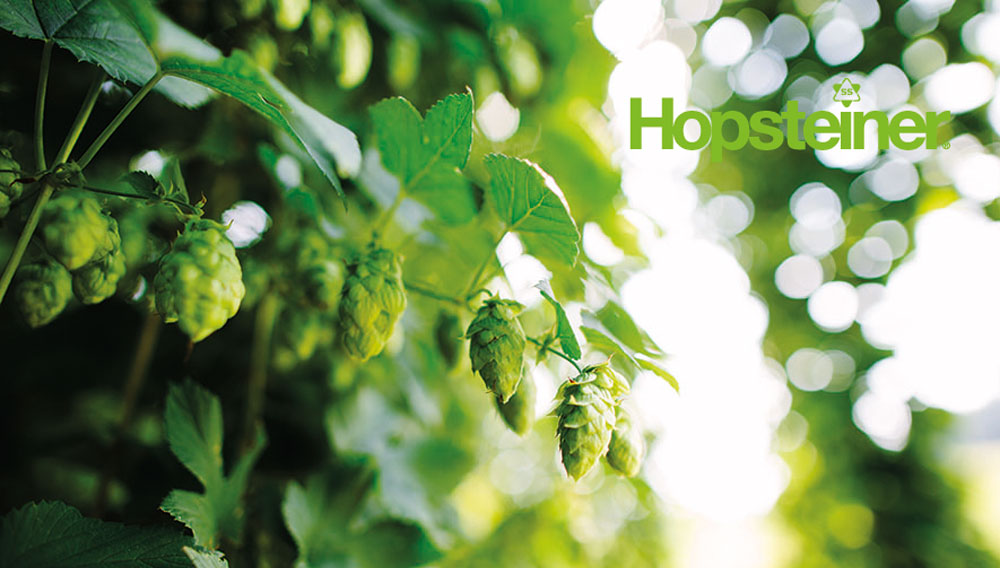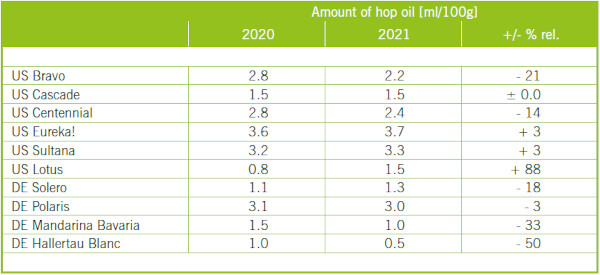Variations in hop aroma depending on crop year
Technical Support | We are pleased to share some averaged data on last year’s composition of aroma substances of some selected hop varieties. This statistic is intended as a helpful indication to achieve consistent hop aroma in beer, especially when changing from one crop year to another.
Based on the addition of the same quantity of bitter substances towards the end of boil, the resulting late hop flavour might vary. Therefore, the ratio of linalool to alpha acids is recommended to assess the aroma intensity (see also previous December newsletters).
For the shown varieties often used in late hopping, fluctuations of the hop aroma intensity are not expected for Cascade, Willamette and Perle at the same dosage rates. For Mount Hood a higher aroma intensity can be expected if hop dosage remains the same. If late hopping is done with Lemondrop, Akoya, Hersbrucker, Hallertauer Tradition slightly less aroma might occur, but should be expected for Saphir. Since the ratio of linalool to alpha is lower compared to the previous year, more hops are needed to match the current sensory profile. As in the previous year, we have also listed some hop varieties that are regularly used for dry hopping. This hop addition is often based on the total amount of hop oils and not on single components, as is the case for late hopping mentioned above.
If you are keen to learn more about the current data of your hop varieties, please do not hesitate to contact us! ()




